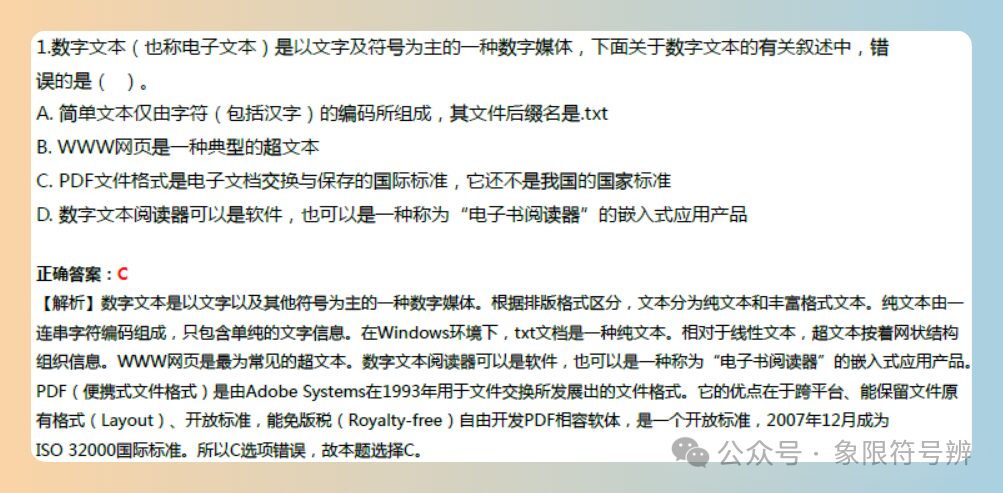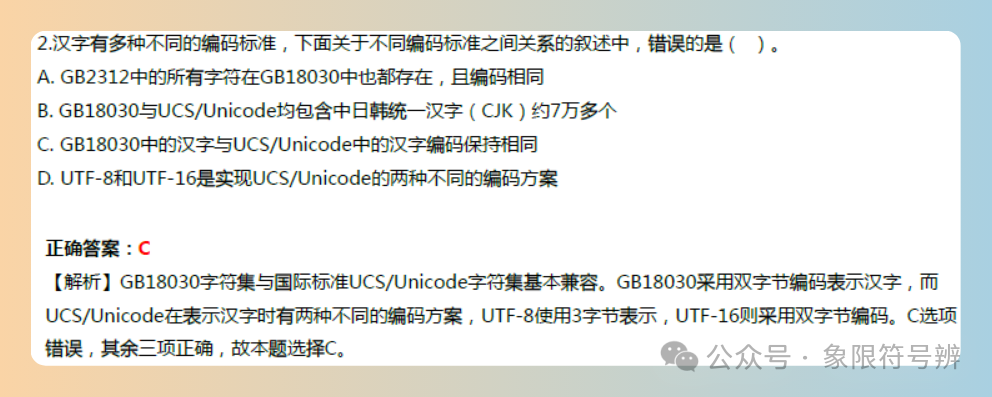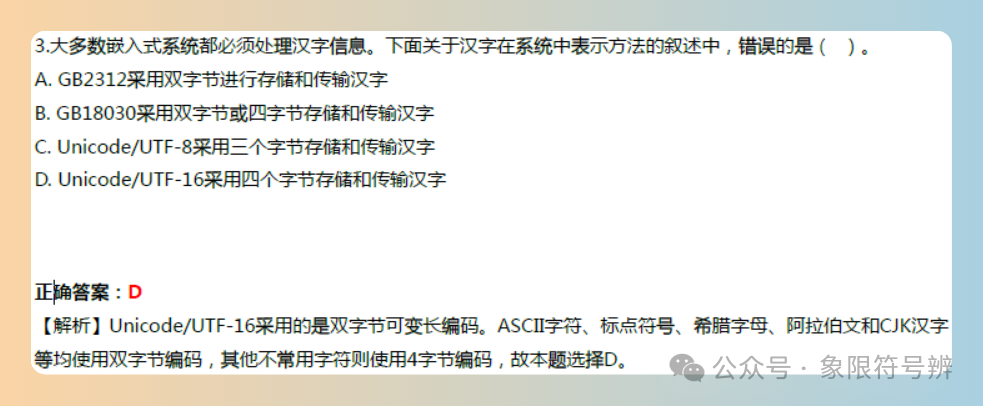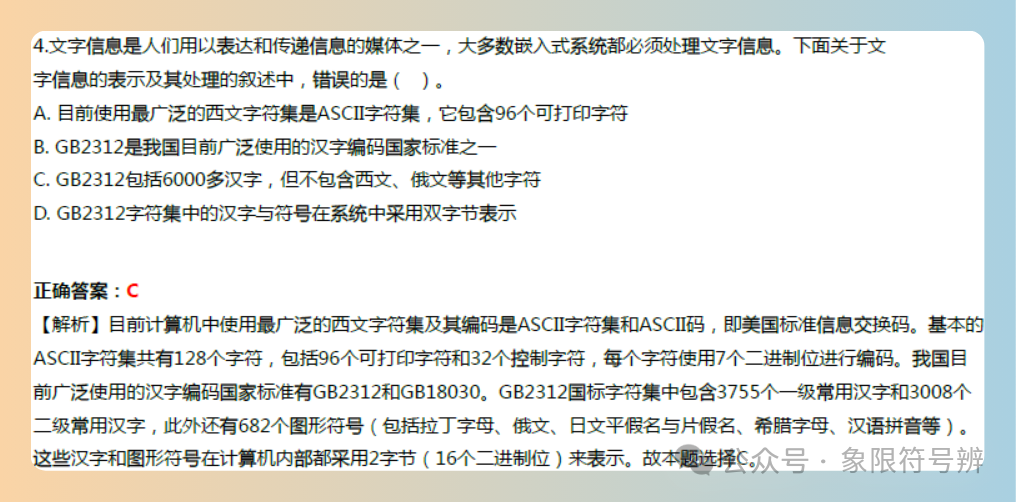Key Knowledge Points in Chapter One:
Understand the characteristics, classification, development, and application of embedded systems, and be familiar with the logical composition of embedded systems.
Understand the main types of embedded processing chips, be familiar with the development process of SoC, and understand the significant meaning of IP cores.
Be familiar with the encoding of Chinese and Western characters, as well as the types and processing of digital text, and master the parameters, file formats, and main applications of digital images.
Understand the classification and composition of computer networks, be familiar with the main content of the IP protocol, and master the composition of the Internet and common access technologies.
Text information in computers is called text. Text is a stream of characters based on a specific character set, with each character represented by binary encoding.
There are mainly two ways to input text or symbols into embedded systems:
-
• One is keyboard input based on Chinese character pinyin. -
• The other is writing on a touchscreen with a finger (or a special pen).
Regardless of the method, the input digital text is represented in binary encoding within the system.
1. Character Sets and Their Encoding
Encoding for Western characters: The most widely used Western character set and its encoding in computers today is the ASCII character set and ASCII code, which stands for American Standard Code for Information Interchange.
The basic ASCII character set contains a total of 128 characters, including 96 printable characters (commonly used Latin letters, Arabic numerals, punctuation marks, etc.) and 32 control characters, with each character encoded using 7 binary bits.
Encoding for Chinese characters: The national standards for Chinese character encoding widely used in our country are GB2312 and GB18030; GB2312 contains only 6763 Chinese characters and is limited to simplified characters, often insufficient for handling names and places. This is especially lacking in the organization and research of ancient texts. Therefore, in 2005, our country issued the GB18030 Chinese encoding national standard.
UCS/Unicode encoding: It is required for the unified processing, storage, and transmission of all languages and characters from around the world; the most commonly used encoding schemes are UTF-8 and UTF-16.
UTF-8 uses a single-byte variable-length encoding, generally using 3-byte encoding, with a very small number using 4-byte.
UTF-16 uses double-byte variable-length encoding, generally using double-byte encoding, while other less commonly used characters use 4-byte.
Note: The GB18030 character set is generally compatible with the international standard UCS/Unicode character set; both GB18030 and UCS/Unicode include over 70,000 unified Chinese characters (CJK).
2. Types of Text
Digital text (also known as electronic text or text) is a type of digital media primarily composed of words and symbols.
If classified based on whether they have formatting, they can be divided into simple text and rich formatted text.
-
• Simple text: Composed of a series of characters (including Chinese characters) that express text content, it contains almost no other format or structure information, also known as plain text, with the file extension .txt; -
• Rich formatted text: To present text in a neat, striking, beautiful, and elegant manner, it requires necessary processing of plain text, with file extensions including: .doc, .html, and .pdf.
If classified based on the organization of text content, it can be divided into linear text and hypertext.
-
• Linear text: The content organization of traditional paper text is linear (sequential), and readers typically read page 1 first (from the first line to the last line), then page 2, page 3, etc. This is linear text, such as simple text. -
• Hypertext: The concept of hypertext is an extension of traditional text; it organizes information in a web-like structure, with various parts of the text linked according to their logical relationships. The WWW webpage is a typical hypertext structure.
3. Text Production and Presentation
1. Text Production
Software primarily used for text editing and typesetting is called word processing software, such as WPS, Microsoft Word, OpenOffice Writer, Adobe Acrobat, etc. They not only have rich text editing and typesetting functions but can also define hyperlinks, create tables, draw graphics, and edit images.
In 2009, the PDF format was approved as the national standard for electronic document formats used for long-term preservation in our country, and many texts edited and created by word processing software can be saved in PDF document format.
2. Text Presentation (Reading)
The general process of text presentation is: first, the format description of the text must be interpreted, then bitmap images of characters, graphics, and tables are generated, and finally transmitted to the monitor or printer for output; the task of text reader software is to present electronic text.
Digital electronic text mainly has two presentation methods: print output and on-screen reading.
There are two methods for describing the shape of characters: dot matrix and outline.
Sample Questions




Alright, that’s all for this content.
Thank you for reading, and feel free to like, follow, and share.
See you next time!